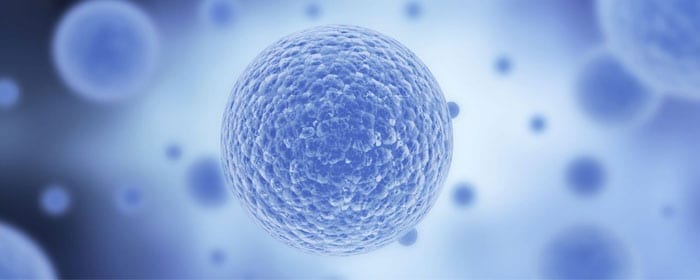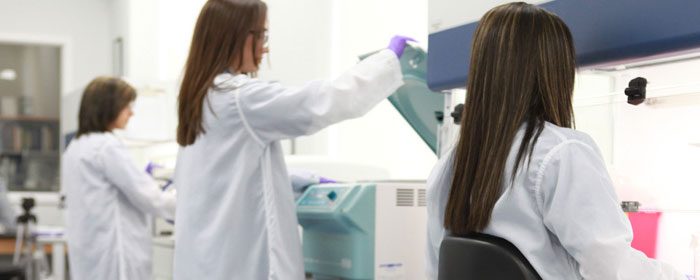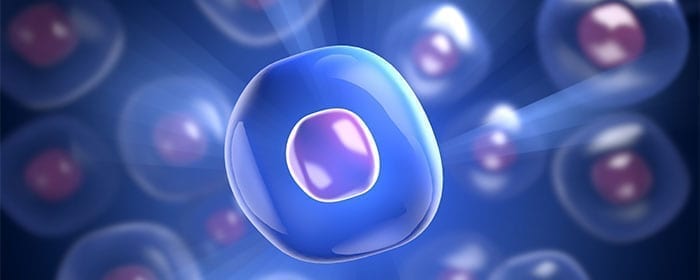
by admin | Nov 4, 2017 | Studies, Lupus
A recent study that was undergone to determine how effective – and how safe – a stem cell transplant for lupus patients found that the approach was both effective and safe. The results were published in the Annals of the Rheumatic Diseases.
The researchers specifically targeted patients with systemic lupus erythematosus who did not respond to conventional treatments for lupus. Certain types of stem cells have been used to treat these types of patients before. In this study, researchers used mesenchymal stem cells because these cells have advantageous properties that make them likely to be effective in the treatment of systemic lupus erythematosus, as well as properties that make them likely to be safer than hematopoietic stem cells.
There were 15 patients who underwent mesenchymal stem cell transplantation as part of this study. The researchers followed up with the majority of these patients for over a year following the procedure. When assessing the patients, the researchers tested them on the systemic lupus erythematosus disease activity index (SLEDAI) and for proteinuria, as these tests can be used to evaluate lupus status and kidney function. The researchers found that every patient who had received the stem cell transplantation showed clinical improvement in their lupus.
Once a year had passed since the stem cell transplantation, all but 2 patients continued to experience an improvement in their lupus, while the other 2 patients had a relapse in their proteinuria. The researchers looked at other signs of kidney and non-kidney function and found evidence of improvement from those tests as well. The researchers did not observe any serious adverse side effects from the stem cell transplantation.
These results demonstrate the promise of mesenchymal stem cell transplant for lupus patients who do not respond to conventional treatments. Given that the stem cells appear to be safe for this application and also to improve lupus, further research will likely help clarify the best way that these stem cells may be used to help patients who suffer from lupus.
To learn more about stem cell transplant for lupus patients, click here.

by admin | Nov 1, 2017 | Studies, Stem Cell Research
Recent research has found that stem cells may offer a promising new solution for treating Achilles tendon ruptures. Conventional treatment options for Achilles tendon ruptures have significant limitations. Some treatments work only to combat the symptoms related to Achilles tendon ruptures but do not work to repair the damage. These options are also time-consuming and often ineffective. Surgical interventions, on the other hand, involve high degrees of risk related to complications due to things like infection and nerve damage.
Given the opportunity for stem cells to help repair tissue damage, physicians and researchers have begun to focus on how stem cells may be specifically applied to treat Achilles tendon ruptures. The current study assessed two different types of stem cells in Achilles tendon rupture repair. These cells, called bone marrow mesenchymal stem cells and tendon-derived stem cells, have advantages over other stem cell types in their potential to help with Achilles tendon rupture. For instance, both stem cell types proliferate quickly.
Because tendon-derived stem cells are specific to the tendon, the researchers hypothesized that these cells would be more effective in Achilles tendon rupture repair than bone marrow mesenchymal stem cells. To test their idea, they implanted the two stem cell types into ruptured Achilles tendons and look at the impact of each stem cell type.
The researchers found that both types of stem cells were effective in improving the potential for ruptured Achilles tendons to heal. Consistent with their hypothesis, however, they found that the tendon-derived stem cells were more effective than were the bone marrow mesenchymal stem cells. Further research will likely help the medical community understand how best to use stem cells to address issues like ruptured Achilles tendons.
To learn more about the benefits of stem cell therapy, click here.

by admin | Oct 20, 2017 | Stem Cell Research
Xiaodong Pang and colleagues have demonstrated the successful use of human umbilical cord tissue-derived mesenchymal stem cells in the treatment of chronic discogenic low back pain. The study, published in Pain Physician, is the first study to addressing the potential of this particular treatment option for chronic discogenic low back pain.
Chronic discogenic low back pain is the leading cause of chronic low back pain, which leads to a significant amount of disability. This type of back pain does not currently have any highly successful treatment options. Generally, the pain is managed conservatively, and if all else fails, surgical fusion is undertaken. Neither of these options addresses the underlying cause of chronic discogenic low back pain and instead simply address the symptoms, offering ways to try to reverse those symptoms.
In this initial study conducted by Pang and colleagues, the researchers aimed to establish that human umbilical cord tissue-derived mesenchymal stem cells could be both feasibly and safely used in humans to treat chronic discogenic low back pain. The study, conducted at a spine center in China, focused on two patients with chronic discogenic low back pain. Both patients underwent the transplantation of the stem cells, and their back pain symptoms and lumbar function were assessed both immediately after the transplants and again two years later.
The researchers found that both the pain and the function associated with the patients’ back conditions improved immediately after the stem cell transplants. In addition to demonstrating that this particular transplant procedure was feasible, the researchers also showed that it was safe, as neither patient suffered side effects.
There are a number of reasons for which human umbilical cord tissue-derived mesenchymal stem cells may provide the benefits that these researchers observed. For instance, unlike other stem cell types, these cells have the ability to differentiate into a number of different types of cells. The results of other studies suggest that these stem cells may help with this lower back condition by altering cell activity such that less inflammation occurs.
Going forward, researchers will need to replicate the findings of this study to show that the positive effects of human umbilical cord tissue-derived mesenchymal stem cells in chronic discogenic low back pain extends to the general patient population. Further, as the mechanism by which these cells may improve the condition is not clear, research that helps to elucidate the way these cells confer their benefits will also help in the development of relevant therapeutic interventions.
To learn more about stem cell treatments click here.
Reference
Pang, X, Yang, H, & Peng, B (2014). Human umbilical cord mesenchymal stem cell transplantation for the treatment of chronic discogenic low back pain. Pain Physician. 17: E525-530.

by admin | Oct 14, 2017 | Stem Cell Research
Research into stem cell-based therapies has increased in recent years due to observations that these types of cells can provide new avenues for treatment where other treatment options are limited. Though bone marrow mesenchymal stem cells have been the gold standard of stem cell-based therapies, there is mounting evidence that umbilical cord stem cells may offer some advantages over bone marrow mesenchymal stem cells, as well as other popular stem cell types, such as adipose tissue, periodontal ligament, and dental pulp. In a recent review in Tissue Engineering, Reine El Omar and colleagues describe the state of umbilical cord stem cell research and the potential benefits of using these cells in stem cell therapies.

According to Omar et al., umbilical cord-derived stem cells were once thought of as medical waste. However, they have now been shown to provide advantages over other stem cells in stem cell-based therapies in 3 major ways:
- Umbilical cord stem cells are easier to collect than are other stem cell types. Extracting bone marrow mesenchymal stem cells, for instance, is technically difficult and painful for donors. Umbilical cord stem cells can be painlessly collected and banked.
- Stem cells tend to proliferate more than other stem cells types. Other stem cell types have been shown to have limited proliferation and differentiation potential. Umbilical cord stem cells, on the other hand, appear to be more proliferative and differentiate longer.
- Umbilical cord stem cells are associated with less severe immune reactions than are other stem cells types. A critical aspect of the practicality of stem cells is their ability to act as therapeutic agents without causing adverse reactions. When the immune system perceives stem cells as dangerous foreign agents, the immune system can react in dangerous ways that lead to tissue damage and even death. Compared to other types of stem cells, umbilical cord stem cells appear to be associated with less severe immune reactions.
While efficacy is important for stem cell-based therapies, safety is perhaps more critical. Thus, research into how stem cells can be used therapeutically must focus not only on what therapeutic impact these cells can have but also what risks these cells pose. Future research will help to determine the safest cells to use and how those cells can best be incorporated to achieve their therapeutic goals.
Learn more about stem cell treatments here.
Reference
Omar et al. (2014). Umbilical cord mesenchymal stem cells: The new gold standard for mesenchymal stem cell-based therapies?

by admin | Sep 27, 2017 | Osteoarthritis
In a review published in Stem Cell Research & Therapy, Gupta et al. describe the latest advances in the use of bone marrow derived stem cells to treat osteoarthritis. These cells are promising because of their ability to treat the degeneration of cartilage that occurs in the disease. When connective tissue degenerates, natural regeneration is highly limited because there is not a strong presence of vasculature within that tissue. Thus, interventions to deal with the effects of osteoarthritis are needed.
Historically, non-stem cell treatments have been used in attempts to treat cartilage degeneration. Physical therapy, pharmaceuticals, and surgical interventions have all been largely employed. For mild cases of osteoarthritis, combinations of physical therapy and pharmaceuticals have been used to manage pain and minimize inflammation. Unfortunately, because the disease is progressive, this type of approach is only effective in the short-term.
Eventually, steroids or hyaluronic acid are generally used to treat osteoarthritis. The impact of these more aggressive treatments, however, is debated and does not appear to be consistent across patient populations. Once osteoarthritis reaches the advanced stage, joint replacement is the only option for relief.
The use of cell-based therapies to treat osteoarthritis is not a new idea. Cultured autologous chondrocytes have been shown to successfully treat cartilage degeneration for over 15 years. The downsides to this approach are that it is invasive, the positive effects are likely temporary, and there has not been sufficient research conducted to fully understand how well the technique works and how to optimize it.
Bone marrow derived stem cells have the potential to carry the same success rate as the cell-based therapies that have long been used to treat osteoarthritis while also overcoming the limitations of those therapies. There are several advantages of the application of bone marrow derived stem cells in the treatment of cartilage degeneration.
First, these particular cells can be easily isolated. Second, they can significantly expand in culture before being used therapeutically. Third, they have modulatory properties that enable them to reduce inflammation, which is a critical factor in cartilage degeneration. Finally, they secrete factors that have the potential to both prevent further degeneration and facilitate regeneration.
Given the number of reasons that bone derived stem cells should theoretically improve upon current methods for treating the cartilage degeneration that occurs in osteoarthritis, more research will likely be conducted to decipher whether these cells do indeed provide benefits that other treatment options do not. In the case that these cells continue to appear promising for osteoarthritis treatment, research will likely also aim at determining the best protocols for using these cells to ensure the best outcomes for osteoarthritis patients.
To find out more about the new alternative way to manage the symptoms of Osteoarthritis, click here.
Reference:
Gupta, PK, Das, AK, Chullikana, A, & Majumdar, A. (2012). Mesenchymal stem cells for cartilage repair in osteoarthritis. Stem Cell Research & Therapy, 3, 25-34.







 St. Petersburg, Florida
St. Petersburg, Florida
